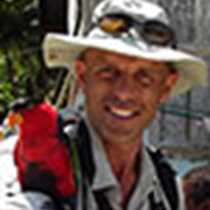Bjørnøya, Barents Sea
As we departed from Tromso yesterday evening, this voyage moved into a distinct second phase. While we cruised north along the beautiful Norwegian coastline we had largely remained in protected waters. And within this coastline, the frequent small towns, the sight of bridges and of ferries were reminders that this wild landscape is inhabited. But after leaving Tromso and heading out in the open waters of the Barents Sea, we are entering the more remote part of this journey.
After a morning at sea, we arrived in the mid-afternoon at Bjørnøya (Bear Island). Bjørnøya is an isolated lump of rock in the middle of the Barents Sea, about midway between North Cape and the Svalbard archipelago (which is our ultimate destination). Rarely visited, and with weather that is often unwelcoming, this island is home to spectacular seabird population estimated to be about 1 million birds strong. Today we were fortunate to find near perfect weather conditions, so we launched our fleet of Zodiacs and set off to explore the southeast coast of the island from the water. Here we found seabirds in profusion, in rafts on the ocean, filling the skies and crammed onto the tiny ledges where they breed on sheer cliffs that rise from the sea to heights of over 400 meters.
The productive waters of the Barents Sea are the driving force behind this display. The birds that feed in these rich waters need a safe place to lay an egg and raise a chick. With limited options for dry land available in this section of the Barents Sea, Bjørnøya is the only choice reminding us that while land birds may nest where they wish, seabirds nest where they can. And during the Zodiac cruise, we passed the wreck of the Petrozavodsk, a freighter that wrecked here in May 2009. On that occasion, the resultant pollution had a minimal impact on the seabird populations but was a reminder that no matter how remote the location, seabird populations on islands will remain vulnerable to human error (see the Daily Expedition Report from National Geographic Explorer for 23 March 2011).




